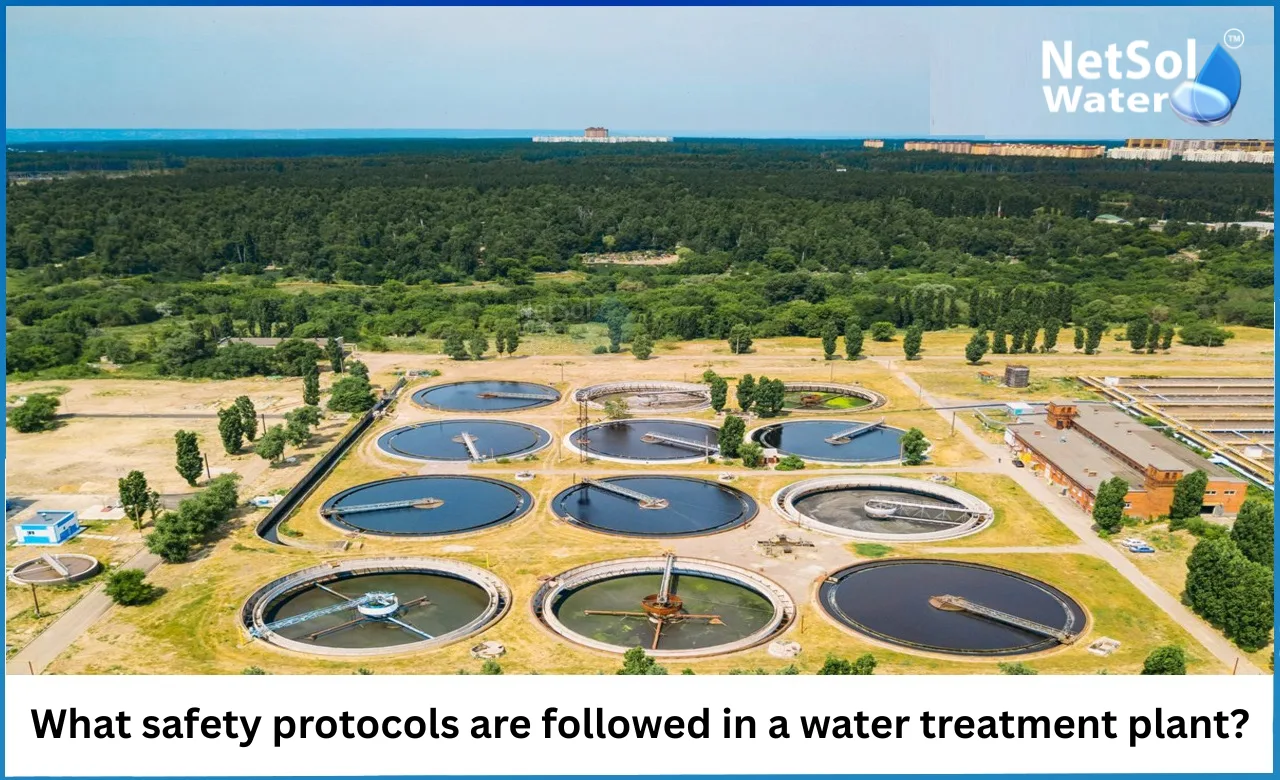
What safety protocols are followed in a water treatment plant?
A Water Treatment Plant keeps water safe for homes schools and businesses. A good plant uses clear rules and steady checks to protect the staff, the public, and the environment. Netsol Water is the leading Water Treatment Plant Manufacturer and helps design plants that follow safety rules and meet local laws. Safety covers how staff work, how chemicals are stored, how machines are run, and how the plant responds to emergencies. Workers need training and clear signs. Machines need regular checks and proper guards. Chemical areas need secure storage and spill plans. Emergency plans must be clear and practiced by all staff.
Personal Protective Equipment and Staff Safety
Staff safety forms the base for safe plant operations. Workers face many tasks that include handling tools, walking near machines, and watching chemical processes. Proper safety measures protect workers and keep the plant working without interruption. Let us have a look on some key parts of staff safety and how they protect people and the plant.
Training and Work Procedures
Training gives each worker the knowledge to act with care when they face hazards at work. Training covers how to use equipment how to read meters and how to follow safety checklists. New staff learn by watching skilled staff and by doing supervised tasks. Regular drills help staff practice what they will do in an emergency. Clear step-by-step procedures reduce mistakes and help teams work in synchronisation. Supervisors check performance and give feedback so skills grow over time. Good training also teaches how to spot risks before they cause harm.
Personal Protective Equipment and Access Control
Protective gear keeps workers safe from splashes sharp edges and loud noise. Staff wear gloves eye protection and face shields when they work with chemicals. Hard hats and safety shoes protect workers in machine areas and near heavy loads. Access control keeps unsupervised people away from dangerous zones. Locked rooms and safety signs guide visitors and staff to safe paths. When workers follow gear rules and access rules injuries fall and work moves ahead without long stoppages.
Chemical Handling and Storage
Chemicals help remove germs and clean water. At the same time chemicals can harm people and the environment if they are not handled the right way. Proper chemical management keeps the plant safe and the treated water clean. Let us have a look on some methods that plants use to control chemical risks and make handling safe.
Safe Storage and Labeling
Safe storage keeps chemicals from mixing and causing harm. Plant storage areas use clear labels and separate shelves for acids bases and oxidizers. Containers stay sealed and they sit on spill trays that block leaks from spreading. Storage areas have good light and clear paths so staff can move safely. Material safety sheets sit nearby so staff can check hazards and first aid steps when they need to. This care lowers the chance of spills and the chance of workers facing chemical harm.
Handling Pumps and Spill Response
Pumping systems move chemicals in measured amounts so people do not handle strong doses. Pumps have alarms and cut-off switches that stop flow if pressure jumps or a leak starts. Staff train on how to use neutralizing agents and how to contain spills. An organized spill kit stays in each key area. Quick response and clear steps stop a small leak from growing into a large problem. If a spill reaches drains the team follows rules that protect local water bodies and soil.
Operational Procedures and Monitoring
A plant must run to steady schedules and tight checks. Proper operations protect the machine life and keep treated water within safe limits. Control rooms and field checks work together to spot faults and to fix them fast. Let us have a look on some operational systems that keep a Water Treatment Plant steady and safe.
Process Control and Instrument Calibration
Process control uses meters and sensors to track flow quality and chemical levels. Operators watch the screens and adjust flows and doses when values change. Instruments need regular calibration so the data stays true. A false reading can lead to wrong actions and harm the output water. Teams plan calibration on a set cycle and they log each check. This record helps find trends and prevents failures before they occur.
Maintenance and Audit Practices
Maintenance keeps motors, valves, and filters in good shape so the plant does not stop unexpectedly. Teams use routine checks and they replace worn parts on schedule. Safety audits assess how well rules work and they show areas that need improvement. External audits add a fresh view and they help the plant meet law and industry needs. When teams fix issues found in audits the plant stays strong and the water stays safe.
Read some interesting information for Sewage Treatment Plant Manufacturers
Conclusion
Safety protects people, property, and the local environment. Plants that follow clear rules for staff protection chemical care and process control supply clean water without long breaks. Netsol Water is the leading Water Treatment Plant Manufacturer and it can help design systems that meet these safety needs. For more information or to request a consultation contact the team and discuss how to make your plant safer and more reliable.
Contact Netsol Water at:
Phone: +91-9650608473
Email: enquiry@netsolwater.com
